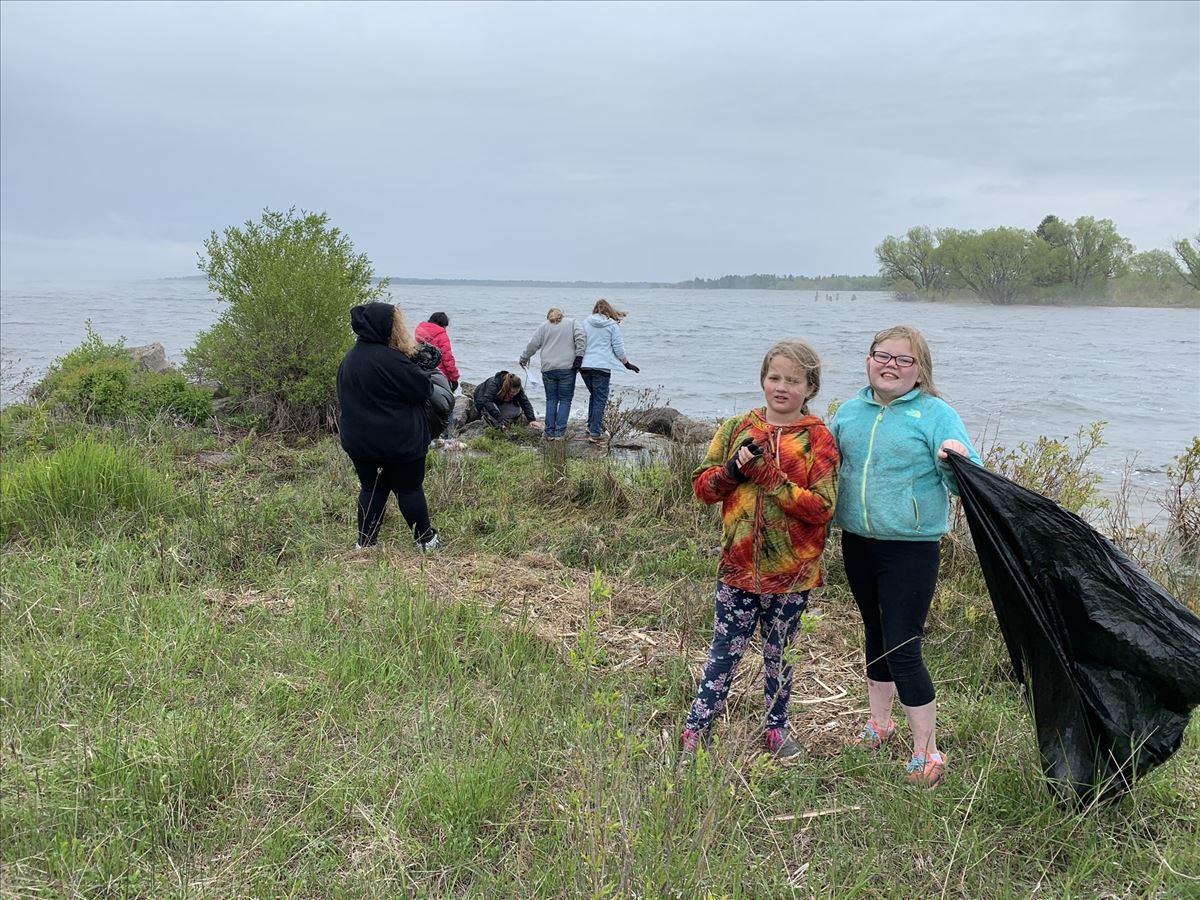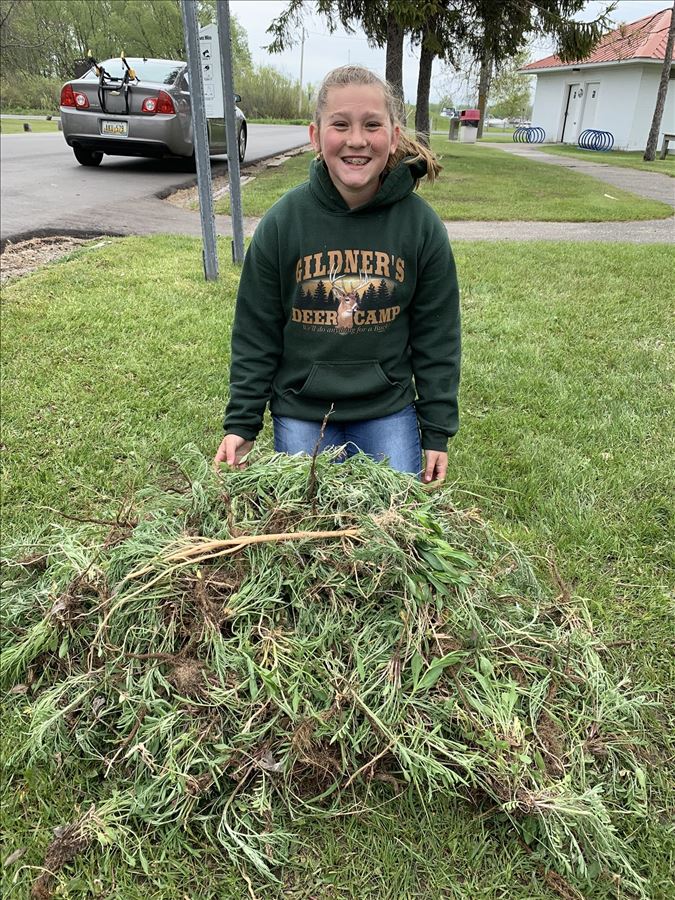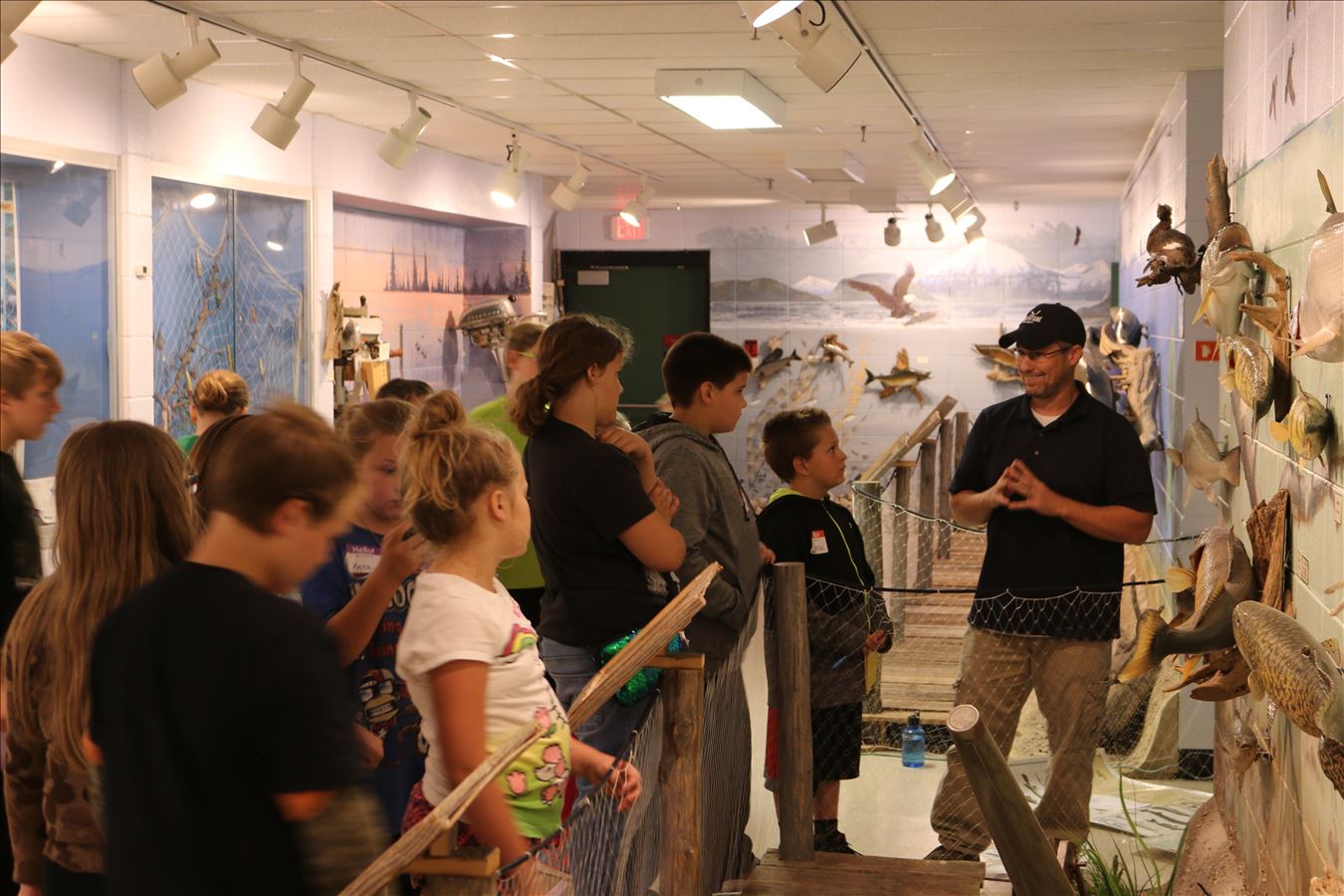Community Connections
The mighty Lake Sturgeon is a prehistoric creature who has survived throughout the centuries in the Great Lakes. Growing as large as 8 feet long, this peaceful predator can live up to 150 years. You might find one in a river or a lake, but definitely not in a classroom. That is, not until the Northeast Michigan Great Lakes Stewardship Initiative (NEMIGLSI) arrived. Through, Our Fisheries, Our Future, a NOAA B-WET project, NEMIGLSI has given teachers the tools they need to begin a project called Sturgeon in the Classroom. And that's what Ann Douglas and her 5th graders from Cheboygan Intermediate School have done. Douglas’s students raised a real, live sturgeon in their classroom until it was mature enough to be released into the wild. While Douglas and her students learned how to keep a newly hatched sturgeon alive, they also learned about sturgeon habitat and behavior, and their role as a native species of the Great Lakes. The project, while focused around Great Lakes stewardship and fisheries science, also included lessons on fish tank chemistry and balanced ecosystems. Students learned about the watershed the sturgeon are released into and their role in the ecosystem.
Power in Partnership
Students did outreach to the public at the Sturgeon for Tomorrow Black Lake Shivaree, a Lake Sturgeon spear fishing festival. The Michigan Department of Natural Resources closely monitors the festival to make sure Sturgeon are sustainably harvested. Only six Sturgeon were allowed to be harvested during the 2019 festival. This low number ensures that Sturgeon are protected from over-fishing and have a viable breeding population. In addition, Ms. Douglas and her students did outreach with their sturgeon at the Earth Day Expo, an annual event with interactive presentations about the Earth and its creatures. Students did reports on the Black River release, including a habitat build. Through Our Fisheries, Our Future Ms. Douglas was able to purchase an aquarium, transportation for field visits, and the camera that was able to look at the sturgeon underwater during release. Even though releasing the sturgeon was the event that culminated the students' work, this project represents a broader goal of NEMIGLSI: to foster community engagement through environmental education. Students were given an opportunity to participate in STEM activities and provide stewardship in the form of beach clean-ups and invasive species (spotted knapweed) removal.
Meaningful Water Education Experiences
The ultimate goal of place-based stewardship education projects was to relate learning in the classroom to what is happening our communities, our watersheds, our lakes. Students are better able to grasp a scientific concept when they can apply it directly to places where they live and play. Cheboygan fifth graders in Ms. Douglas's class assessed the importance of watershed and fisheries studies and the economic and ecological impact they have on their community. In their studies, students visited the Besser Museum for Northeast Michigan and NOAA Thunder Bay National Marine Sanctuary to learn about fish species that are native and not native to the Great Lakes and the maritime heritage of Northeast Michigan. Students took to the water in a glass-bottomed boat to look at shipwrecks in Cheboygan and learn more about historic fishing vessels. As part of their stewardship project, students did a beach clean-up at the local Gordon Turner Park, along the shore of the Cheboygan River and Lake Huron. They learned about marine debris and why preventing it can help ensure a healthy habitat for Sturgeon. In addition, students promoted land-based biodiversity by removing invasive spotted knapweed and used their creativity to do some nature journaling at the park.
56 Students are involved in this project.
2 Teachers are involved in this project.
Cheboygan, MI 49721


